Syn.: Tithymalus balsamifer (Ait.) Haw.
Family: Euphorbiaceae Juss.
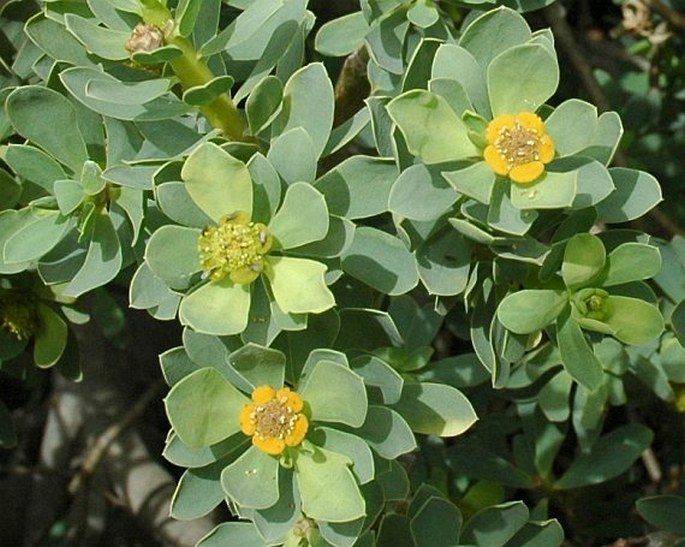
Distribution: A Saharan-Arabian species, occurs from the Canary Islands across Northern Africa to Somalia, Saudi Arabia and Oman.
Ecology: It grows on dry rocks and stone slopes, common in coastal regions.
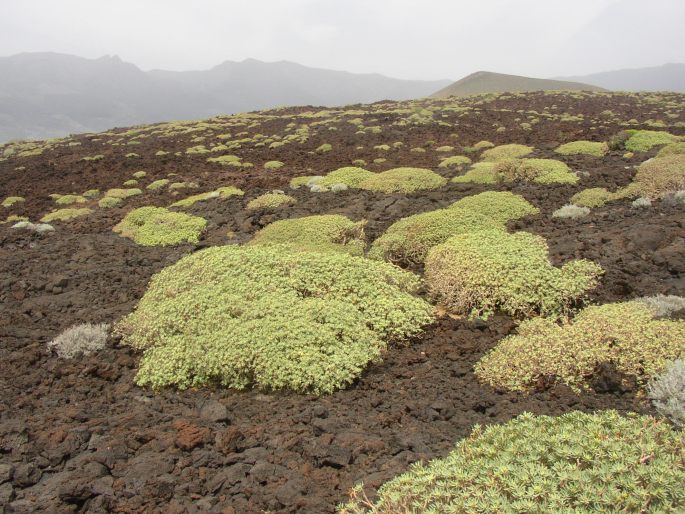
Description: A woody, succulent shrub, 20–200 cm high, a densely branched. The greyish stems with a terminal rosette of leaves, the leaves are oblong-spathulate, pale green to glaucous, obtuse to acute, up to 3.5 cm long. The inflorescences consisting of a single terminal flower, floral glands oval to rounded, more or less entire. Flowers from December to July. The capsules are solitary, globose.
Use: All parts of the plant contain a white, non-poisonous latex which has traditionally been used as chewing gum and as means of removing cysts and warts. This plant has a high ornamental value.
Threat and Protection: This species is a protected plant by the Convention on International Trade in Endangered Species of Wild Fauna and Flora (CITES).
Note: Euphorbia balsamifera serves as a host plant for the beetle Deroplia schurmanni.
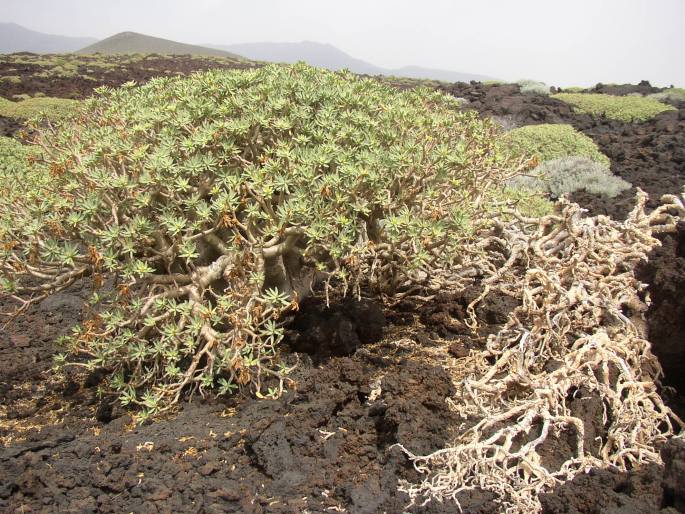
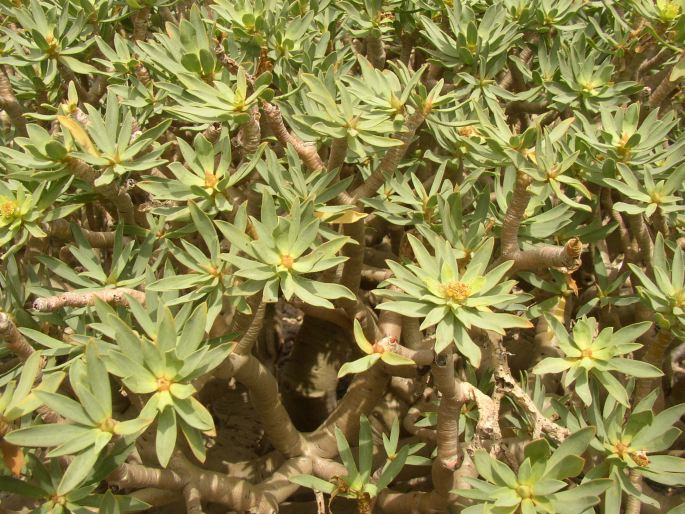
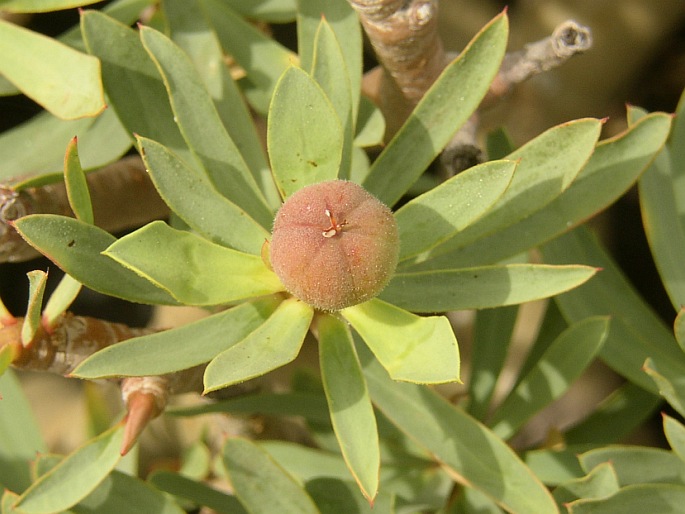
These images were taken in Spain, the Canary Islands, Tenerife, Malpaís de Güimar (by Ladislav Hoskovec, date April 1, 2006); the Canary Islands, Fuerteventura, Coralejo (by Naďa Gutzerová, February 2005).


